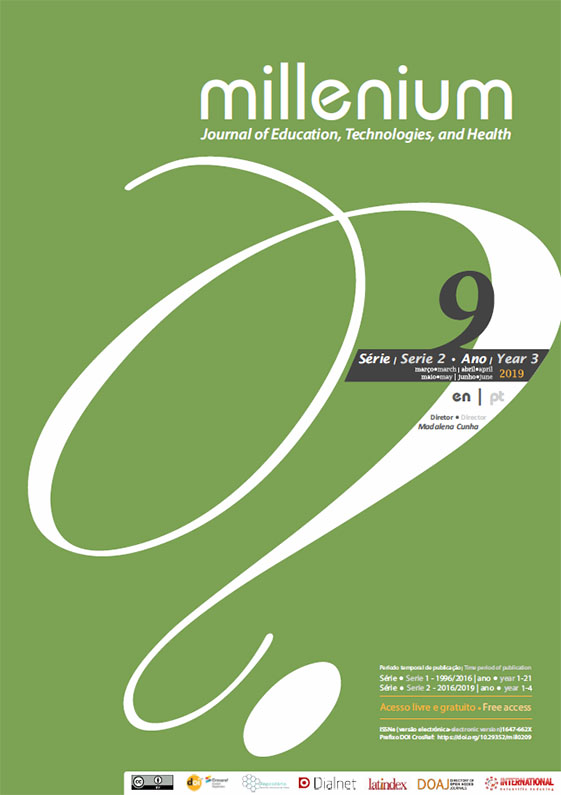Adhesion strength of flame sprayed ceramic coatings obtained by robotic projection
DOI:
https://doi.org/10.29352/mill0209.01.00177Keywords:
Thermo spray, Adhesion coatings, Morphologic characterization, RoboticsAbstract
Introduction: One of the possible applications of ceramic thermal barriers is in shells (permanent moulds – die casting). The moulds` capacity to support very high temperatures (up to 1600 °C) plays a crucial role in the selection of materials due to the liquid state of the cast iron.
Objectives: This paper presents and discusses the obtained results from robotic flame projection tests, carried out with the purpose to quantify the influence of several factors of flame sprayed in the adhesion strength of coatings of Nickel-Aluminium-Molybdenum and Zirconium Oxide. In literature a minimum adhesion strength was not found for the application of thermal ceramic barriers in the coating of permanent casting moulds, so in this work it is intended to obtain its values considering several combinations of projection parameters and substrates.
Methods: The determination of the adhesion strength was performed according to the standard ASTM C633-79 where the coated test specimens were glued to CK45 steel against-specimens with a cyanoacrylate glue (LOCTITE 415). A weight of 100 N was then applied for 3 minutes to promote the initiation of the polymerization reaction of the cyanoacrylates and a period of 24 hours was needed so the bonded glue could acquire its maximum strength (sufficient enough to tear off the coating of the specimen). Finally tensile tests were carried out at the speed of 1 mm/min.
Results: The main parameters studied are the material of the substrate, the projection angle and the substrate preheating temperature. The higher adhesion strength for the sprayed to 90° (average value of 6.2 MPa) was obtained by the specimens of spheroidal graphite cast iron (SGCI) with a preheating temperature of 120 °C. For the preheating of 90 °C and spray angle of 90° the aluminum-copper (AlCu)
and brass specimens were the ones that obtained the higher adhesion strengths (average value of 4.5 MPa). The sprayed of 65° originates the higher adhesion strength in all the materials used for the substrate, being the highest value (average value of 8.3 MPa) obtained by the spheroidal graphite cast iron.
Conclusions: The results obtained clearly suggest that the substrate material and the preheating temperature strongly influence the adhesion strength. The analysis of the coatings microstructures, using optical microscopy, supports this observation.
Downloads
References
AMPCO (1982). METCO 447NS, METCO 201NS e METCO 105NS, Technical Bulletin - Flame Spray Equipment and Supplies, Ampco Metal Portugal Lda.
AMPCO (1994). METAL Technical Bulletin AMPCO 97, Ampco Metal Portugal Lda.
ASM (1990a). Handbook Committee Properties and Selection: Irons, Steels and High-Performance Alloys, Metals Handbook, Vol. 1, ASM, 10th ed., 244-247.
ASM (1990b). Handbook Committee Properties and Selection: Nonferrous Alloys and Special - Purpose Materials, Metals Handbook, Vol. 2, ASM, 10th ed., 175-207.
ASTM (1989). ASTM Standard Test Method for Adhesion or Cohesive Strength of Flame Sprayed Coatings C 633-79, Annual book of ASTM standards - Section 2, Nonferrous products, Metallic and inorganic coatings, metal powders, sintered P/M structural parts, Vol. 2.05, 633-667.
Clare, J. H., & Crawmer, D. E. (1987). Thermal Spray Coatings, Metals Handbook, Vol. 5 - Surface cleaning, Finishing and Coating, ASM, 9th ed., 361-374.
Clarke, D. R., & Phillpot, S. R. (2005). Thermal barrier coating materials, Materials Today, 8(6), 22-29.
Dapkunas, S. J. (1997). Measurement Methods and Standards for Processing and Application of Thermal Barrier Coatings, Journal of Thermal Spraying Technology, 1(1), 67-76.
Gu, L. J., Fan, X. Z., Zhao, Y., Zou, B. L., Wang, Y., Zhao, S. M., & Cao, X.Q. (2012). Influence of Ceramic Thickness on Residual Stress and Bonding Strength for Plasma Sprayed Duplex Thermal Barrier Coating on Aluminum Alloy, Surface Coating Technology Journal, 206(21), 4403-4410.
Karaoglanli, A. C., Dikici, H., & Kucuk, Y. (2013). Effects of Heat Treatment on Adhesion Strength of Thermal Barrier Coating Systems, Engineering Failure Analysis Journal, 32, 16-22.
LOCTITE (2010). Technical Data Sheet LOCTITE® 415™.
Mahood, E. R. (1990). Thermal Spraying - Practice, Theory, and Application, 1, 1-91.
Vaßen, R., Jarligo, M. O., Steinke, T., Mack, D. E., & Stöver, D. (2010). Overview on advanced thermal barrier coatings, The Journal of Surface and Coatings Technology, 205(4), 938-942.
Vijay, K., & Balasubramanian. K. (2016). Processing and design methodologies for advanced and novel thermal barrier coatings for engineering applications, Particuology Journal, 27, 1-28.
Vuoristo, P. (2014). Thermal Spray Coating Processes. Comprehensive Materials Processing Journal, 4, 229-276.
Xueling, F., Rong, X., Wang, T. J. (2014). Interfacial delamination of double-ceramic-layer thermal barrier coating system, Ceramics International Journal, 40(9), Part A, 13793-13802.
Downloads
Published
How to Cite
Issue
Section
License
Authors who submit proposals for this journal agree to the following terms:
a) Articles are published under the Licença Creative Commons (CC BY 4.0), in full open-access, without any cost or fees of any kind to the author or the reader;
b) The authors retain copyright and grant the journal right of first publication, allowing the free sharing of work, provided it is correctly attributed the authorship and initial publication in this journal;
c) The authors are permitted to take on additional contracts separately for non-exclusive distribution of the version of the work published in this journal (eg, post it to an institutional repository or as a book), with an acknowledgment of its initial publication in this journal;
d) Authors are permitted and encouraged to publish and distribute their work online (eg, in institutional repositories or on their website) as it can lead to productive exchanges, as well as increase the impact and citation of published work
Documents required for submission
Article template (Editable format)





